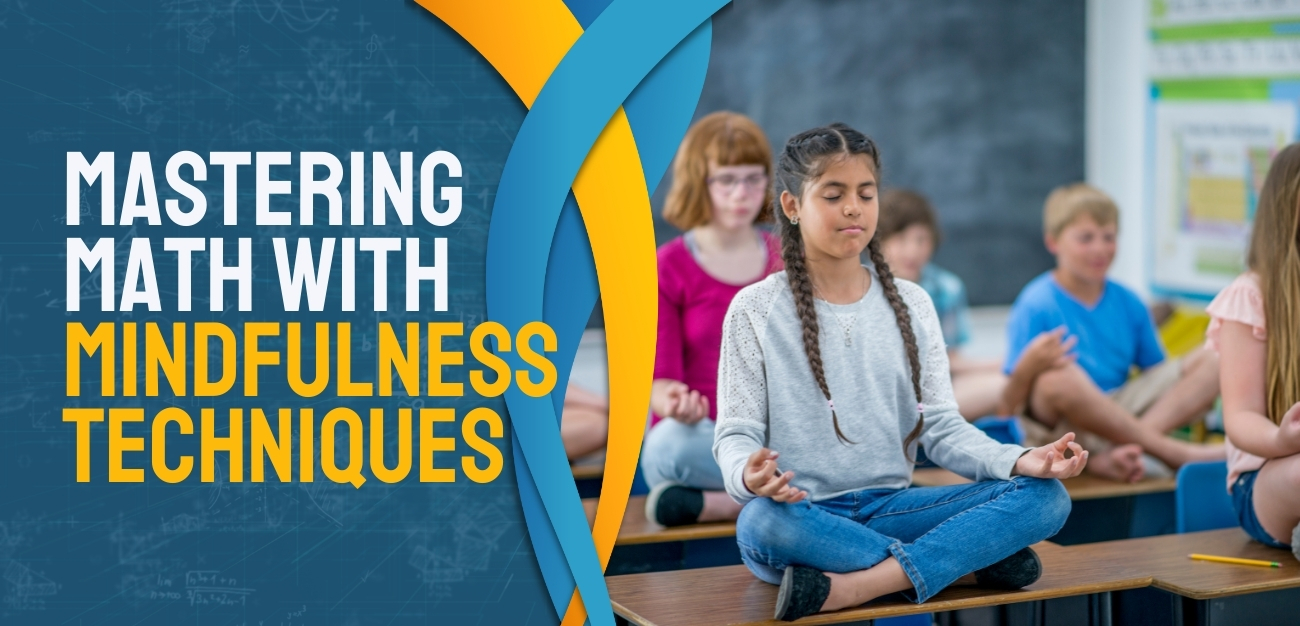Trying to help your child with their math homework but finding it a bit of a challenge? Don’t worry, you’re not alone in this. Most parents have been in your shoes at one point or another. The key lies in helping your little one understand the subject and find satisfaction and a sense of achievement in it. So how can we make this often daunting task much easier and effective? The answer may surprise you – mindfulness. Let us explore how mindfulness techniques can turn this challenge into a rewarding experience.
Finding the solution to a math problem is not just about knowing the formula; it’s also about maintaining a calm and focused mind.
Becoming mindful while helping your child with their math homework actually involves two primary aspects. First, there’s the focus on the cognitive skills associated with math. This includes understanding the problem, recalling knowledge, and applying it. Second, and arguably more importantly, there’s the aspect of emotional regulation. Dealing with frustration, maintaining attention, and managing distractions are all part of this.
- Focus: Being intensely aware of what you’re truly involved in.
- Recall: The ability to bring back information into conscious thought.
- Application: Utilizing the information or knowledge in a practical situation.
Mindfulness techniques deal with both cognitive and emotional aspects while aiming at a balanced approach. By doing so, we can help children relax and be more focused, which eases understanding and application of mathematical concepts.
Mindfulness For Kids: Enhancing Concentration And Understanding
When it comes to math, concentration is everything. If your child can’t focus their attention on the problem at hand, no amount of repetition or tutoring will help. Thankfully, mindfulness can step in to save the day. Here’s how.
First, let’s clarify what we mean when we refer to mindfulness. In essence, it means adopting a particular mindset, one that is grounded in the present moment. It’s about acknowledging thoughts and feelings without judging them. Practicing regularly can help reduce stress, increase concentration, and improve overall mental well-being.
So, how can you, as a parent, implement mindfulness techniques to support your child’s math learning? Well, it’s simpler than you might think. There are numerous strategies to experiment with and the good news is, you can explore them together.
Practice guided mindfulness exercises together
Guided mindfulness exercises can be an excellent way to begin. Plenty of apps and online resources that cater to different age groups and interests are available. Regularly sitting down together to do a short mindfulness exercise can help your child unwind and refocus their attention.
Encourage mindful breaks
Breaks are important, especially when wrestling with challenging math problems. Encourage your child to take short, mindful breaks by focusing on their breathing or just noticing the environment around them. This can help them calm down and refocus their attention when they return to their work.
Model mindful behavior
Children learn a great deal from observing their parents. So, show your child that it’s okay to take a moment to just breathe and reset. You can incorporate mindfulness into your own routine and invite them to join you. You’ll be surprised how quickly they adapt.
By incorporating the practice of mindfulness, your child can transform their relationship with math, moving from a place of frustration to one of calm and focus. Remember: patience and practice play key roles in this journey, and the results will definitely be worth the effort.
Practicing Mindfulness: A Guide For Parents
Mindfulness means creating a special focus on the present moment, accepting and embracing it without judgment. It’s a simple yet powerful method that can help children stay calm and focused on their math homework. Here are some easy and effective mindfulness techniques you can introduce to your child’s study routine.
The Power of Breath
Teaching your child to focus on their breathing can be a game-changer. It doesn’t just offer momentary relief from frustration; consistent practice can improve their concentration levels significantly. Start by asking your child to take a deep breath, hold it for a few seconds, and then exhale slowly. Encourage them to pay attention to the feeling of the air moving in and out of their lungs. Repeat this exercise for a few minutes before every study session.
Mindful Observation
Another important technique is mindful observation, encouraging your children to really notice the world around them. It’s a simple exercise where you ask your child to describe what they see, hear or touch, in detail. This not only calms the mind but also trains it to pay attention to things in a non-evaluative way. It could be as simple as observing a leaf, a stuffed toy, or even their math notebook.
Echo Counting
This is a fun and interactive mindfulness activity specifically designed to improve maths skills. Invite your child to sit comfortably, close their eyes and imagine a series of numbers. Then, ask them to echo these numbers back to you, perhaps doubling them, halving them, or adding specific values. By visualizing and manipulating numbers in their mind, they will be honing their mental arithmetic skills while also practicing mindfulness.
Ultimately, incorporating mindfulness exercises into your child’s study time can have dramatic results, helping them to become more present, focused, and calm. Above all, remember to be patient. Mindfulness takes time and practice, but once mastered, it can greatly enhance your child’s ability to learn and understand complex math concepts.
Strengthening The Parent-Child Bond Through Mindfulness In Math
Maintaining a supportive and encouraging environment is the first and most crucial step in strengthening the parent-child bond through mindfulness in math. This connection can be fostered by sharing the homework experience, celebrating success, and reassuring them that it’s okay to make mistakes.
- Sharing the experience: Work on math problems together, encouraging your child to talk through their thought processes. This not only builds strong rapport but enables them to break down complex problems into simpler steps, abating any potential stress and confusion.
- Celebrating success: Always make a point to acknowledge their efforts, rather than just the final product. This can be as simple as praise after a sustained period of focused work. Celebrating small victories also works wonders in building a growth mindset, making them more resilient against future math challenges.
- Reassuring them: Remind your child that difficulty with math doesn’t define them or their intelligence. It’s simply an obstacle to be overcome with practice, patience, and determination. Normalize making mistakes and emphasize how they result in opportunities for learning and improvement.
Moreover, a sense of calm and focus can be embedded into math homework routines through the inclusion of brief mindfulness exercises. For instance, before diving into tough math problems, a 5-minute guided mindfulness activity could serve as an effective mental warm-up, reducing initial apprehensiveness and enhancing concentration. Following the homework session with another round of mindfulness can also be beneficial, as it helps in winding down, reflecting, and reinforcing what was learned.
Creating a Mindful Environment
While practicing mindfulness with your child is incredibly beneficial, ensuring that the environment surrounding this practice is conducive for mindfulness and math is equally important. This can be achieved by:
- Eliminating distractions: Opt for a quiet spot with minimal disruptions to prop up the concentration levels and help them redirect their focus back to math whenever it drifts.
- Organizing the workspace: An organized workspace can prevent a cluttered mind by making it easier for your child to locate needed materials, freeing up mental energy to focus on the task at hand.
- Maintaining a positive atmosphere: Reinforce the learning experience with positivity and encouragement, as a positive outlook sparks curiosity, promoting deeper understanding and long-term retention.
Don’t forget that a nurturing, non-judgmental environment is key. Mindfulness cultivates calm, focus, and patience, but it needs time, practice, and a supportive atmosphere to truly flourish and benefit your child’s math learning journey.
Enhancing Concentration And Understanding
In conclusion, mastering math through mindfulness techniques is a wonderful approach that parents can utilize to enhance their child’s concentration and understanding. Practicing guided mindfulness exercises together, encouraging mindful breaks, and modelling mindful behaviour contribute to transforming math learning into an enjoyable and less stressful experience for children. Parents can experience the power of breath, mindful observation, and echo counting to help their children relish their math homework.
A mindfulness-based approach to math can do wonders for a child’s academic skills and parent-child bond. Most importantly, remember that fostering a supportive atmosphere will allow your child’s ability to concentrate and understand math through mindfulness to genuinely thrive and bear fruit.
For more information on mindfulness for kids or tips on homework help and more, sign up for our Bulletin today!



